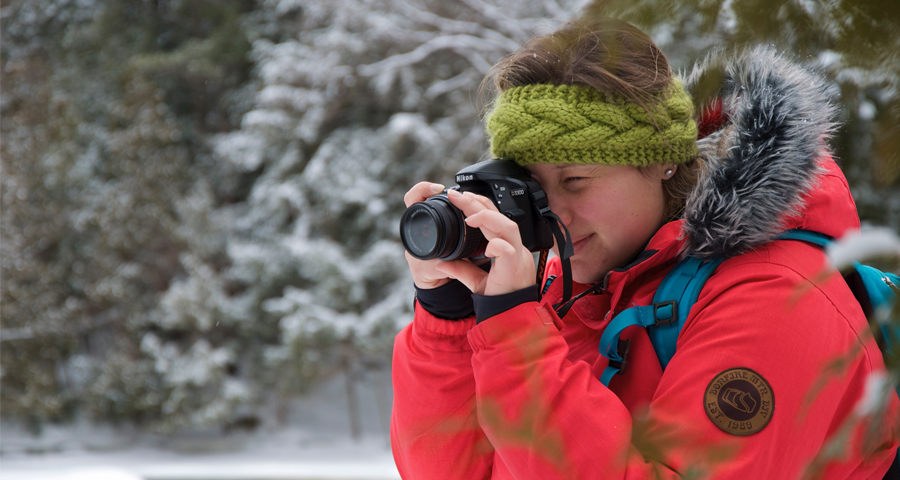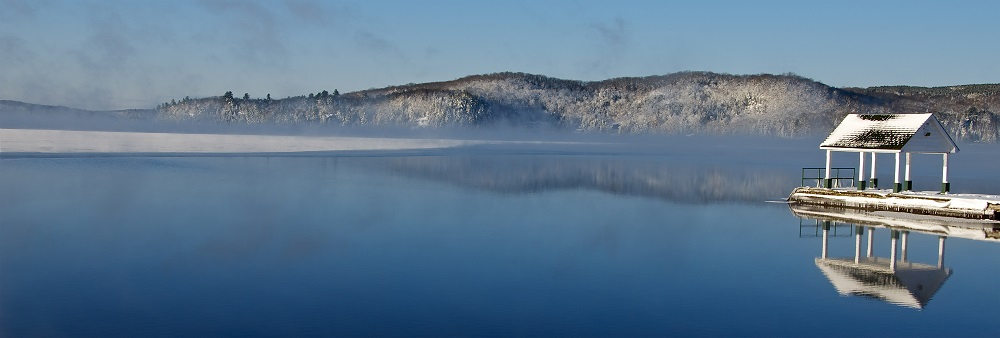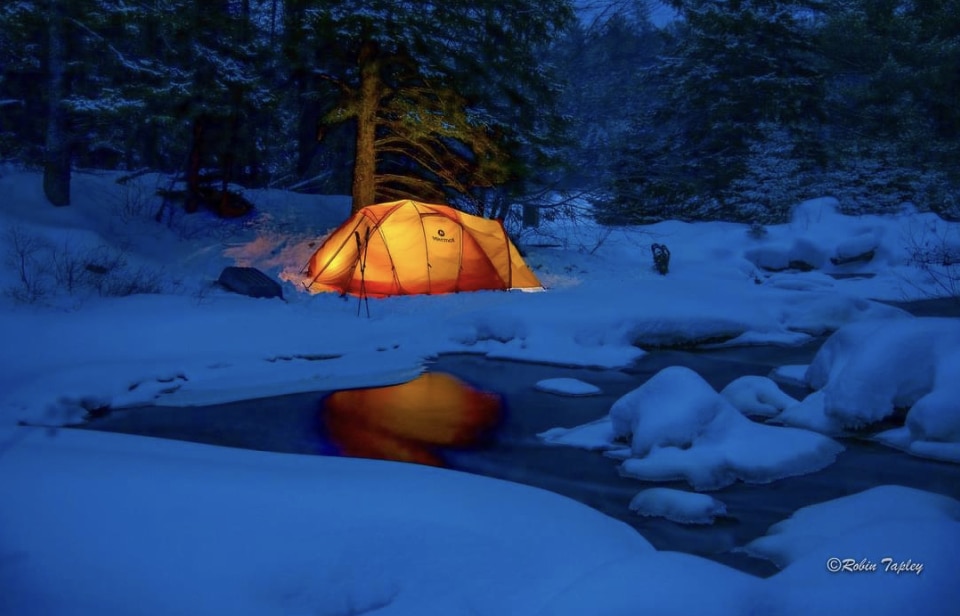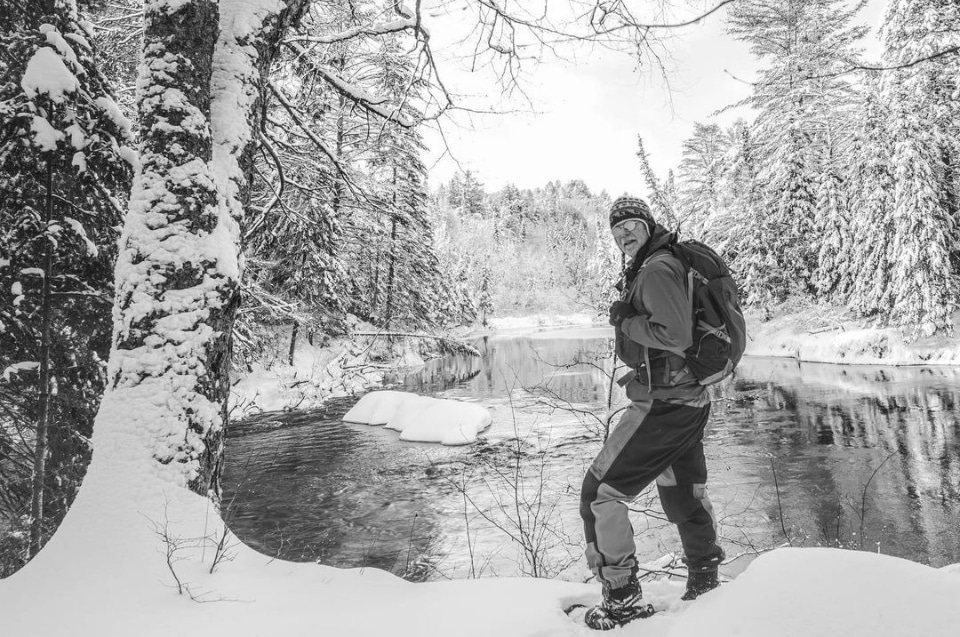
Winter Photography: Don’t Put Your Camera Away
Winter is the time of the year when most photographers pack up their gear and store it away until the warmer temperatures return. But with so much stunning, snowy scenery everywhere in Ontario’s cottage country from now until spring, you may want to reconsider being a fair weather photographer and get out to take some of your best photos ever.

Winter in the wilderness lets you slow things down and see deeper into the woods around you. Taking time for a second glance will result in something catching your eye, as shadows dance across the land, trees are silhouetted against a white and silver background, and white-tail deer move slowly along the forest edges. Shapes and forms are more pronounced, especially trees that are outlined in a sunset backdrop. Wildlife tends to be a little more easily seen (including tracks), especially birds that arrive on backyard feeders.
With amazing light, colours and textures around you, winter will make your photos come alive. Winter photography also offers a particular set of challenges, including bright white snow, extreme contrast, cold and highly reflective surfaces. So it’s important to do your homework prior to heading out into the field (because fumbling through camera settings at -15C can end a perfect day of adventure pretty quickly…)

Winter Photography Tips
Dress for the Occasion: A well planned winter adventure can be cut short if you haven’t layered your clothing properly. Keep in mind that you may be standing in one place for a very long time. Good insulated boots, thin gloves that fit into mittens (which will allow you to work camera functions without taking your gloves off) and a warm hat are essential.
Cameras, Batteries and Tripods: Cold temperatures can drastically reduce the batteries charge, so keep them warm inside a jacket and bring a spare battery fully charged. Also remember condensation can be a disaster for the internal parts of your camera; bringing a cold camera into a warm environment will cause condensation, so warm it up slowly. Tripod tubes can be wrapped with pipe foam and a winter lubricant applied to the moving parts.

Shoot in the Raw: This will give you the greatest flexibility in post-production and will allow you to easily fix problems that would be harder (if not impossible) to correct if shooting in JPEG.
In the Field: It’s easy to review photos in the field, but remember that causes additional battery power and reduces the charge significantly. Also, deleting photos may cause you to drop something that may have been a keeper, so wait until you return and are in the comfort of your home before reviewing or deleting anything.
Use Camera’s Manual Mode: Snow is bright and can be overpowering for your camera’s internal light metre. Using your camera in AUTO, or even APERTURE/SHUTTER PRIORITY mode, will result in dark images, since the camera is reading all of the bright light reflected from the snow. The best way to overcome this is by shooting in MANUAL and compensate accordingly.

Winter is a magical time and there are so many ways to experience it. So take the winter photography challenge and head out to take your most impressive photos yet. Your extra effort is sure to be rewarded!
All photos by Robin Tapley
Guest expert: Robin Tapley is a life-time resident of Muskoka and naturalist/educator at Fanshawe College in London. He is also the owner of Tapley’s Nature Trails, co-owner at Canadian Adventure Expeditions, and a renowned wilderness photographer.

